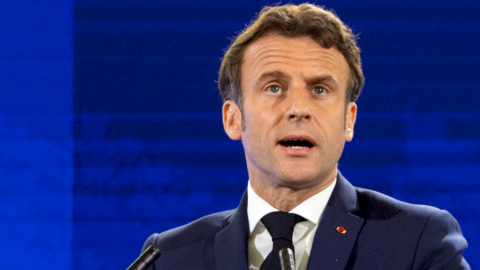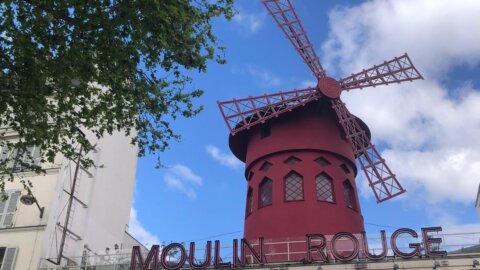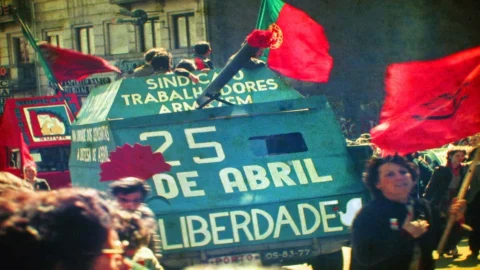The first robotic application in Italy in the museum sector takes off from the Castle of Racconigi, in Piedmont, which allows you to visit areas not included in the normal tourist routes thanks to a "digital eye" remotely piloted by the guide. The robot is called Virgil, which uses TIM's 4G mobile network already active in the Municipality of Racconigi, and was developed on an experimental basis by JOL CRAB of Telecom Italia in collaboration with the Department of Architecture and Design of the Turin Polytechnic.
Virgil was presented today at the Real Castello by the Directorate for Cultural and Landscape Heritage of Piedmont, the Terre Dei Savoia Association and Telecom Italia. The innovative project will allow the robot to support the traditional activities of the tourist guide, with the possibility of showing environments not included in the normal tourist routes for the benefit of greater enhancement of the artistic and cultural heritage.
Technically this is now possible thanks to a camera and a cloud robotics platform connected to TIM's 4G network, through which Virgil send to the guide's tablet or smartphone a high-definition video stream of some areas of the Castle that are not accessible to visitors. The robot is piloted remotely by the guide who, using an App, manages its movements.
“The experimentation started and the robot that we have the privilege of presenting today allow us to evaluate new paths to improve cultural fruition, overcoming schemes that are now insufficient – explains Giovanni Quaglia, President of Terre dei Savoia – Certain that culture is a powerful factor of 'economic and social innovation, we operate, in a European logic, for the enhancement of the beauty, creativity and identity of our territory, also in terms of tourism.
“The collaboration with Terre dei Savoia and with the Architecture and Design department of the Polytechnic of Turin – underlines Gabriele Elia, Director of Open Innovation Research of Telecom Italia – confirms Telecom Italia's commitment to promote the creation of a network aimed at enhancing the cultural heritage of our area. This is possible thanks to innovative cloud architectural solutions and the diffusion of broadband, in the specific case of the 4G mobile network which already covers a large part of Piedmont".
The first robotic application in Italy in the museum sector is launched at the Racconigi Castle, which allows you to visit areas not included in the normal tourist routes thanks to a "digital eye" remotely piloted by the guide
The initiative aims to enhance the cultural and artistic heritage by ensuring visitors an interactive and personalized visit experience.
Virgil, which uses TIM's 4G mobile network already active in the Municipality of Racconigi, was developed on an experimental basis by Telecom Italia's JOL CRAB in collaboration with the Architecture and Design Department of the Turin Polytechnic
Turin, 10 November 2014
The Directorate for Cultural Heritage and Landscape of Piedmont, the Terre Dei Savoia Association and Telecom Italia presented today, at the Real Castello di Racconigi (CN), Virgil, the first robot in Italy that enters a museum area to ensure visitors an interactive and personalized tour of the Savoy palace.
It is a highly innovative project that has led to the creation of the first Italian robot prototype which, alongside the traditional activities of the tourist guide, is able to show environments not included in the normal tourist routes for the benefit of greater enhancement of the artistic and cultural.
Thanks to a camera and a cloud robotics platform connected to TIM's 4G network, Virgil sends a high-definition video stream of some areas of the Castle not accessible to visitors to the guide's tablet or smartphone. The robot is piloted remotely by the guide who, using an App, manages its movements.
This application also allows the creation of a real network between the various museum sites of the Polo Reale, thus allowing visitors to take a virtual journey through the cultural heritage of the area starting from those represented by the Terre di Savoia Association.
Virgil was conceived by Telecom Italia's Joint Open Lab CRAB (Connected Robotics Applications laB) in collaboration with the Department of Architecture and Design of the Turin Polytechnic: specialized researchers have in fact allowed the robot to move between the halls of the Castle of Racconigi in full safety, thanks to a command software that remotely manages its movements in full compliance with the principles of roboethics and attention to aesthetics.
The project, in addition to wanting to provide a valid support tool for the work of the tourist guide, has the objective of placing the visitor within a cultural network which, starting from the Castle of Racconigi, ranges towards other places of the artistic heritage of the area .
"The experimentation that has begun and the robot that we have the privilege of presenting today allow us to evaluate new ways to improve cultural enjoyment, overcoming schemes that are now insufficient - he explains Giovanni Quaglia, President of Terre dei Savoia – Confident that culture is a powerful factor of economic and social innovation, we operate, in a European logic, to enhance the beauty, creativity and identity of our territory, also in terms of tourism”.
“The collaboration with Terre dei Savoia and with the Architecture and Design department of the Turin Polytechnic – he underlines Gabriele Elia, Open Innovation Research Director of Telecom Italia – confirms Telecom Italia's commitment to promoting the creation of a network aimed at enhancing the cultural heritage of our territory. This is possible thanks to innovative cloud architectural solutions and the diffusion of broadband, in the specific case of the 4G mobile network which already covers a large part of Piedmont".




